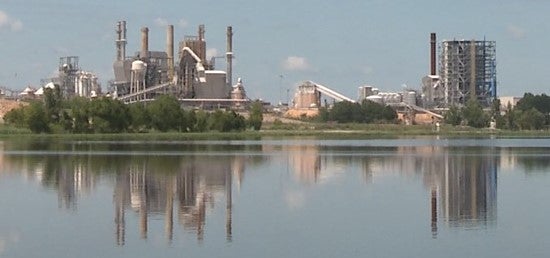GP named ‘Energy Star Facility’
Published 2:18 pm Tuesday, March 22, 2022
|
Getting your Trinity Audio player ready...
|
For the second time in as many years, the Brewton mill of Georgia-Pacific has been recognized as an Energy Star Facility by the U.S. Environmental Protection Agency (EPA).
The announcement came last week as officials included 93 manufacturing plants from across the country as receiving the designation.
Brewton mill vice president and mill general manager Mark Martin said the designation was earned the team of employees in Brewton.
“The Brewton team has a long history of environmental stewardship and sustainability,” Martin said. “We strive to be the best manufacturer in our industry, which includes being an environmentally responsible operator within our community and the region. This accomplishment is another example of our commitment to environmental excellence and being a good business neighbor.”
The Brewton mill received its first Energy Star designation in 2021, and was also recognized as an Energy Star for Industry facility. Brewton mill is the first and only integrated paper mill in the U.S. to receive Energy Star designation.
According to EPA information, ENERGY STAR certified plants are verified to be among the most energy-efficient plants within their industries. Together, they prevented more than 5 million metric tons of greenhouse gas emissions from the industrial sector, which is responsible for nearly a third of U.S. greenhouse gas emissions.
“As these companies demonstrate, improving energy efficiency serves to confront climate change while strengthening our economy,” said EPA Administrator Michael S. Regan. “Manufacturing plants that reduce energy consumption as part of the transition to a zero-emissions future save money and create the resiliency needed for the long-term health of their operations, our economy, and our planet.”
Thanks to their superior energy performance over a single year, these plants avoided nearly 90 trillion Btus of energy consumption and prevented emissions equal to the annual energy use of nearly 650,000 American homes. Since the first plants were certified in 2006, ENERGY STAR certified plants have cumulatively saved manufacturers more than $7 billion on energy bills when compared to average-performing facilities.
Energy efficiency cuts energy waste and is an essential action for achieving net-zero greenhouse gas emissions by 2050 for both the United States’ Long-Term Strategy and the sustainability of the manufacturing sector.
To assess energy performance, plants use EPA’s ENERGY STAR energy performance indicators (EPIs), or, in the case of petroleum refineries, the Solomon Associates Energy Intensity Index (Solomon-EII™) scoring system. Plants must score 75 or higher on these 100-point scales—indicating that they are more energy efficient than at least 75% of similar facilities nationwide—to be eligible for ENERGY STAR certification. ENERGY STAR certification is available for 20 manufacturing sectors, from cement and steel to glass and commercial bakeries.
Other Alabama manufacturers included in the nation-wide designation include:
Argos US in Calera (cement manufacturing); Honda Development & Manufacturing of America, LLC, in Lincoln (automobile assembly); Honda Development & Manufacturing of America, LLC, in Lincoln (automobile engine); and Tuscaloosa Organic Baking Co., LLC (commercial bread and roll baking)
Since 2006, the ENERGY STAR Industrial Program has annually certified manufacturing plants for performing within the top 25 percent of energy performance in their industries nationwide. More than 230 plants have achieved this distinction since 2006. For more information, see: ENERGY STAR plant certification. For a list of all certified plants, see: ENERGY STAR Certified Building and Plant Locator. To learn more about how EPA and industry work together, see: Industrial Energy Management.
ENERGY STAR® is the government-backed symbol for energy efficiency, providing simple, credible, and unbiased information that consumers and businesses rely on to make well-informed decisions. Thousands of industrial, commercial, utility, state, and local organizations—including about 40 percent of the Fortune 500®—rely on their partnership with the U.S. Environmental Protection Agency (EPA) to deliver cost-saving energy efficiency solutions. Since 1992, ENERGY STAR and its partners helped American families and businesses avoid more than $450 billion in energy costs and achieve 4 billion metric tons of greenhouse gas reductions.






